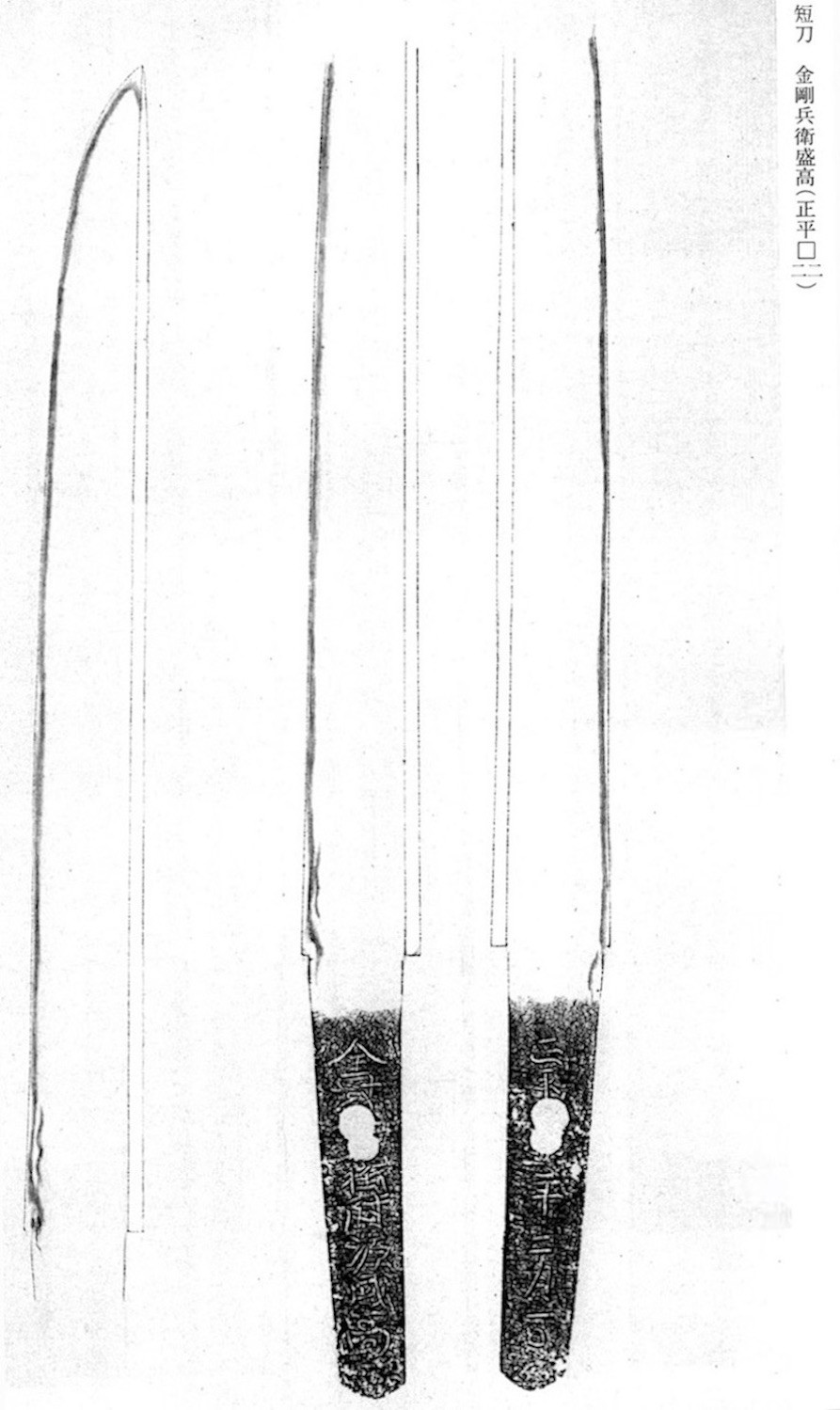Moritaka (盛高), Shōhei (正平, 1346-1370), lived in Chikuzen province, signed as "Kongōbyōe no Jō Minamoto Moritaka“ (金剛兵衛尉源盛高), Kongōbyōe school, according to some sources the nephew of Sairen (西蓮), first name „Saburō“ (三郎), some old manuscripts list him as one of the Masamune no Jittetsu, is said to be a direct line of Morikuni (盛国), the oldest extant date signature of this line is found on a tantō and is from the 2nd month of the fourth year of the Shōhei era (1349), but the mekugi-ana goes through the chiselling of the year and so only a four can be seen, that means because of the length of the Shōhei era the date could also be the 14th or 24th year (1359 or 1369 respectively), this possible moving-forward of the date is another support for the dismissal of the master-student relationship with Masamune.

Figure 1. Kotō Meizukushi Taizen (古刀銘尽大全), 1792, Volume 3, p. 27/1.

In addition, one should pay attention to the close connection between Samonji School and Kongōbyōe School. A vivid illustration could be found in Kokon Meizukushi Taizen (古今銘盡大全), 1st edition 1661. Written by Takeya family, 8 volumes edition, 1778.

Figure 2. Kokon Meizukushi Taizen (古今銘盡大全), 1778, Volume 1, pp. 22-2, 23-1.

The oldest survived signature of Moritaka one can find on a tantō bears a signature: Kongōbyōe Minamoto Moritaka (金剛兵衛源盛高) and dated: on the 1st day of the 2nd month of the Shōhei 4 (1349), i.e. 正平◯二二年二月一日. This tantō was designated as Jūyō Tōken at the 23rd jūyō-shinsa held on the 1st of July, 1975. It was indicated in setsumei that nakago-jiri of this tantō was made in the typical form for Kongōbyōe School: sotoba-gata (卒塔婆).

Figure 3. NBTHK Jūyō Tōken Nado Zufu, Volume 23.